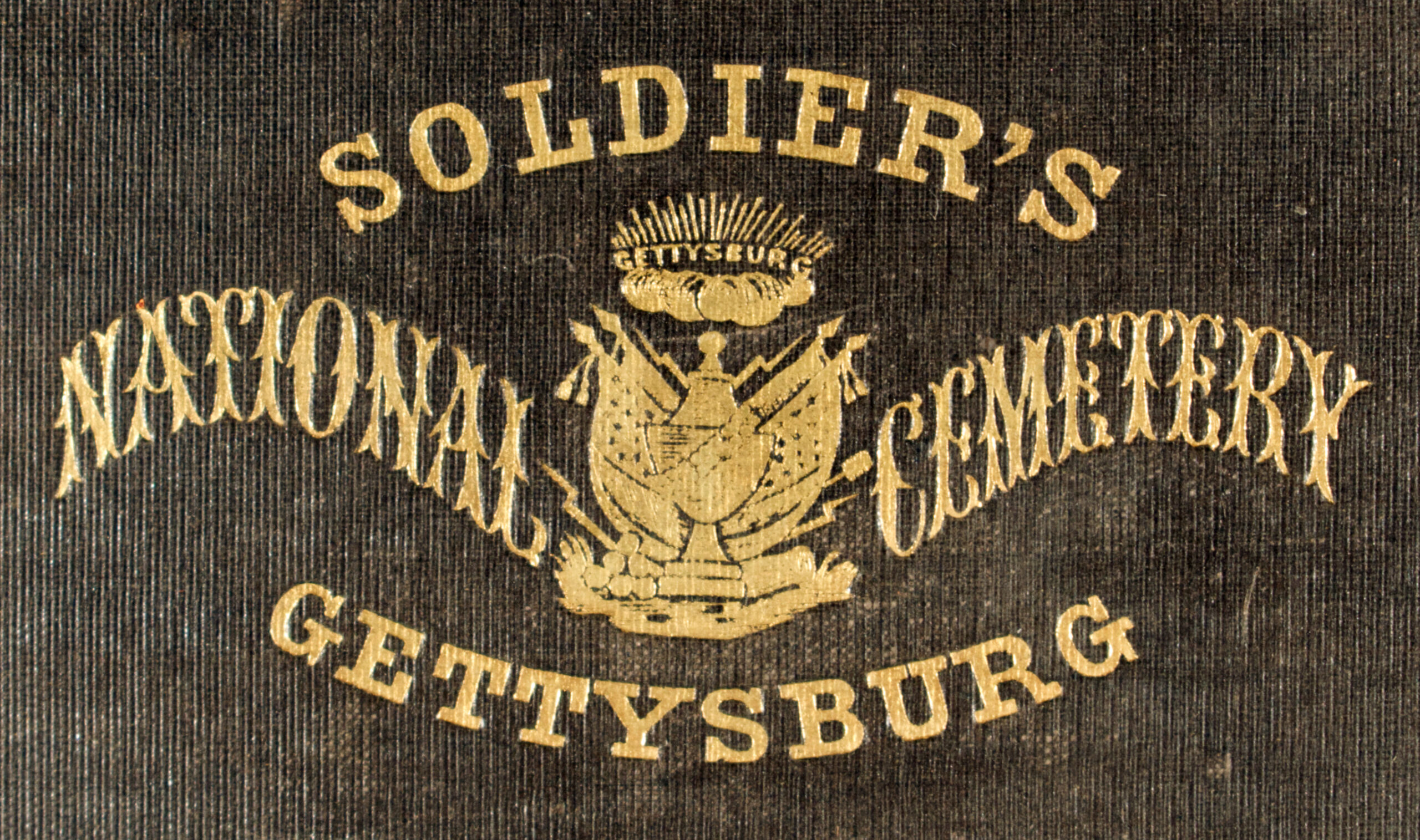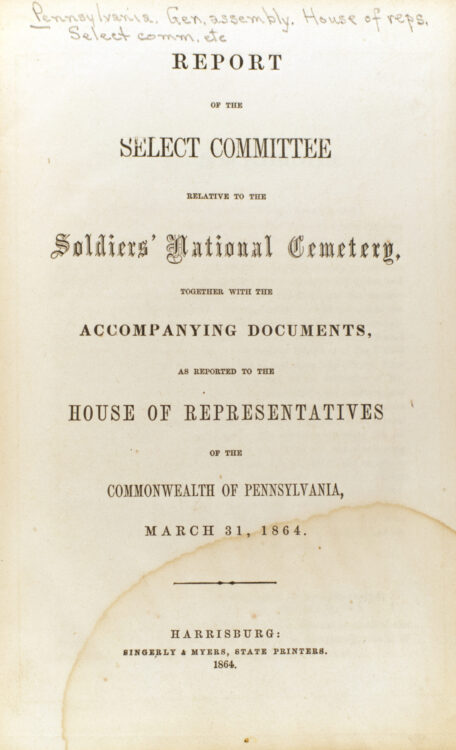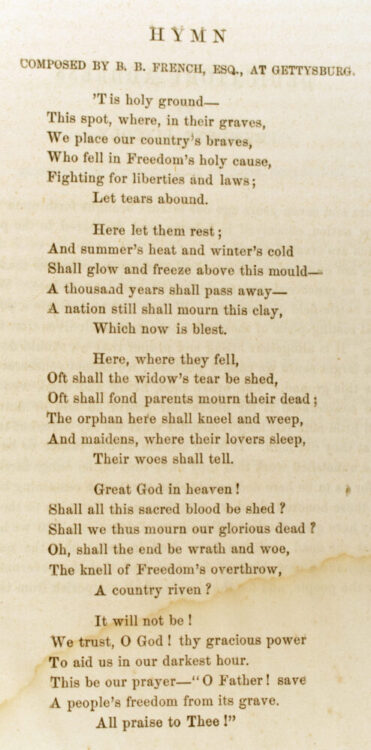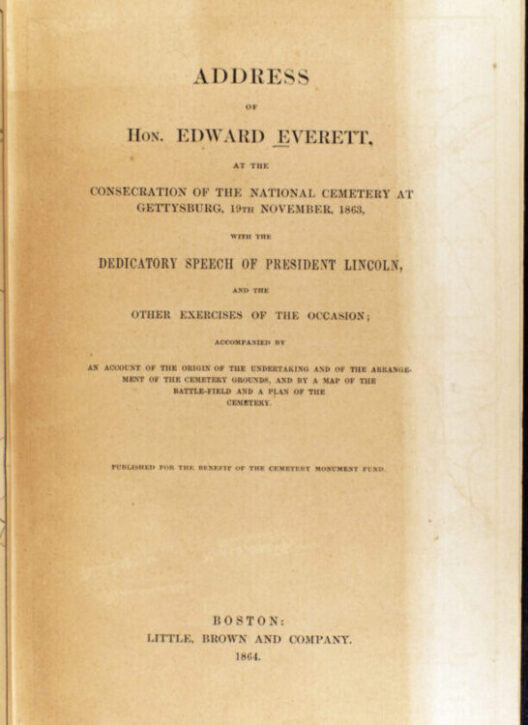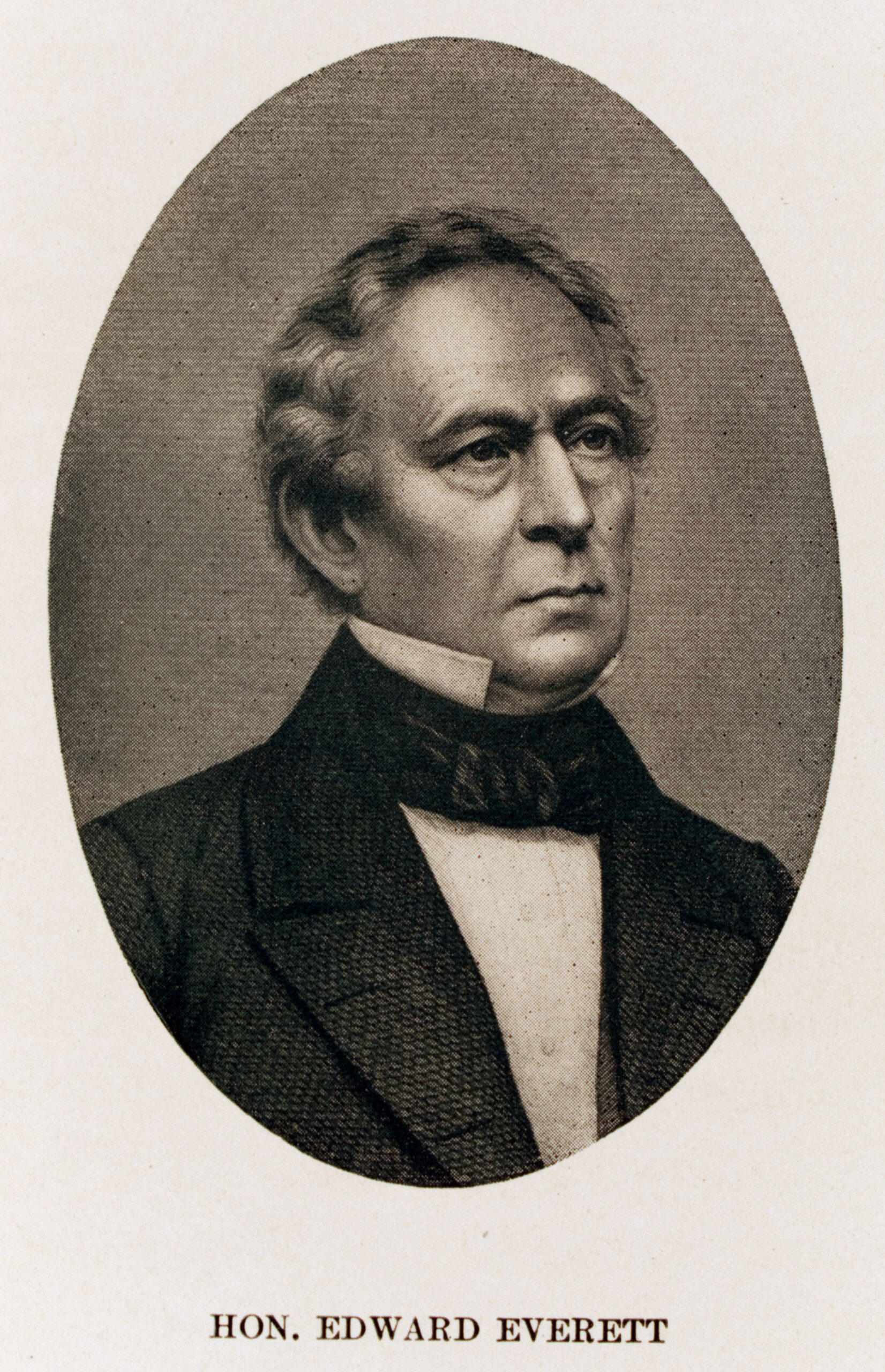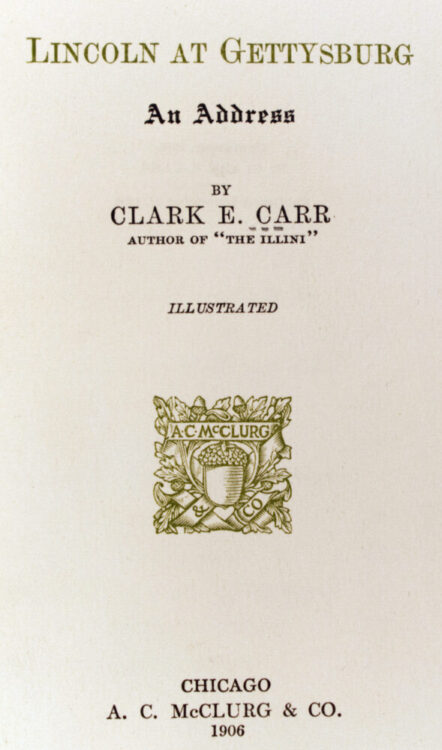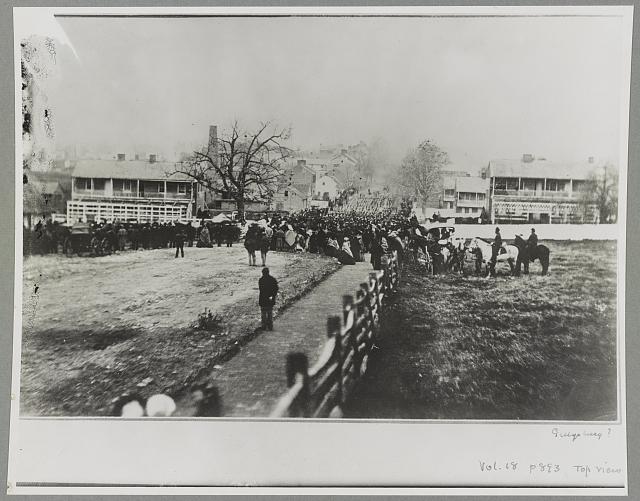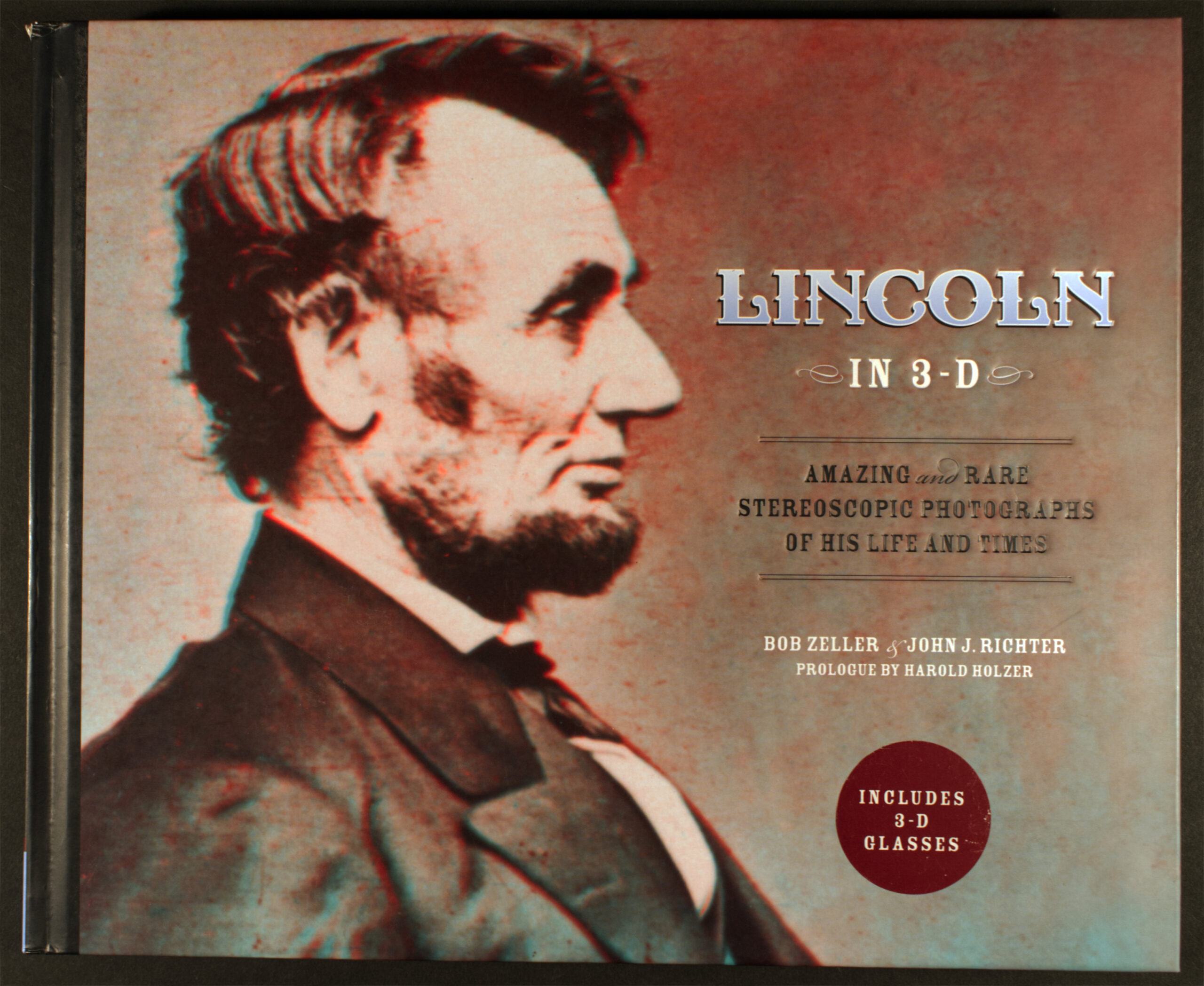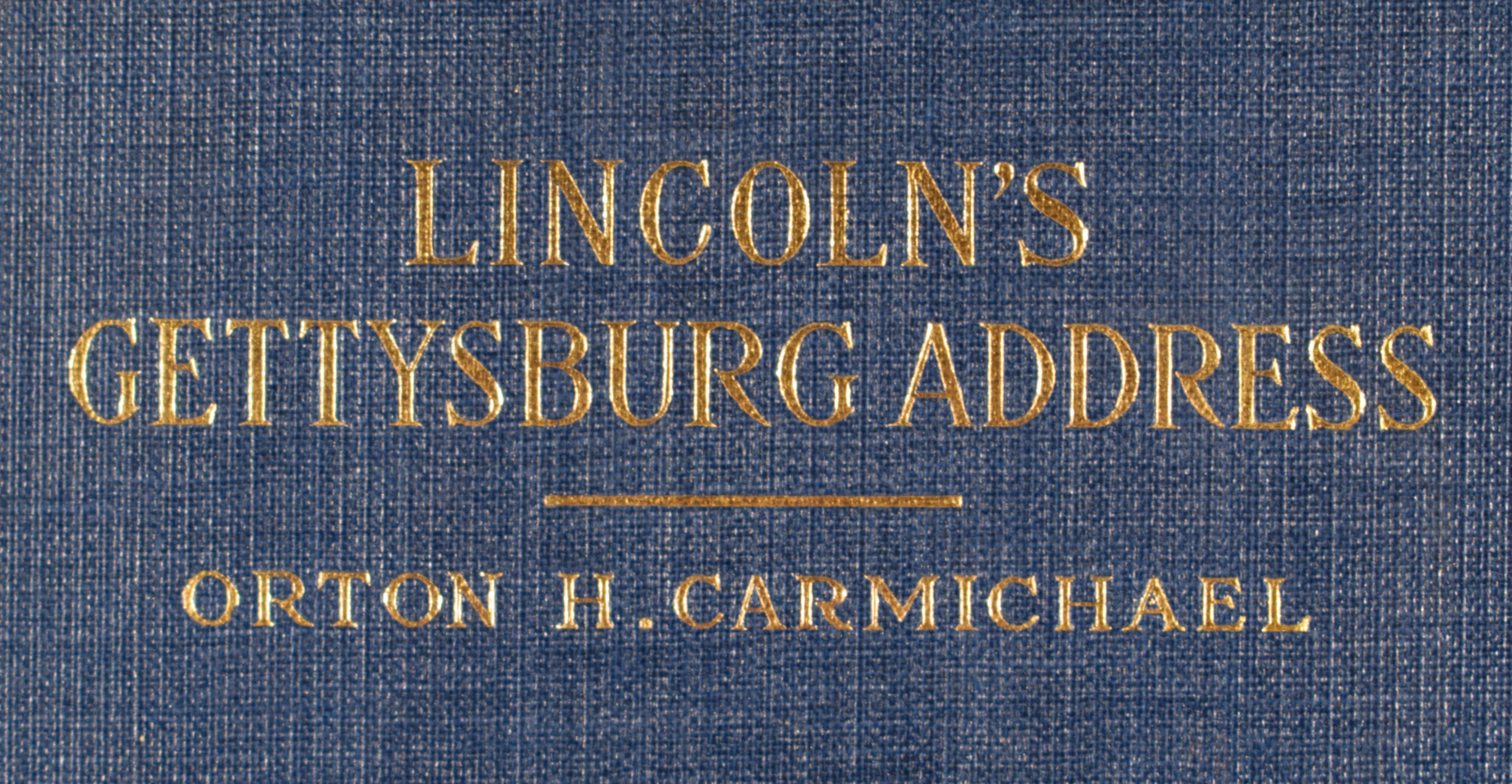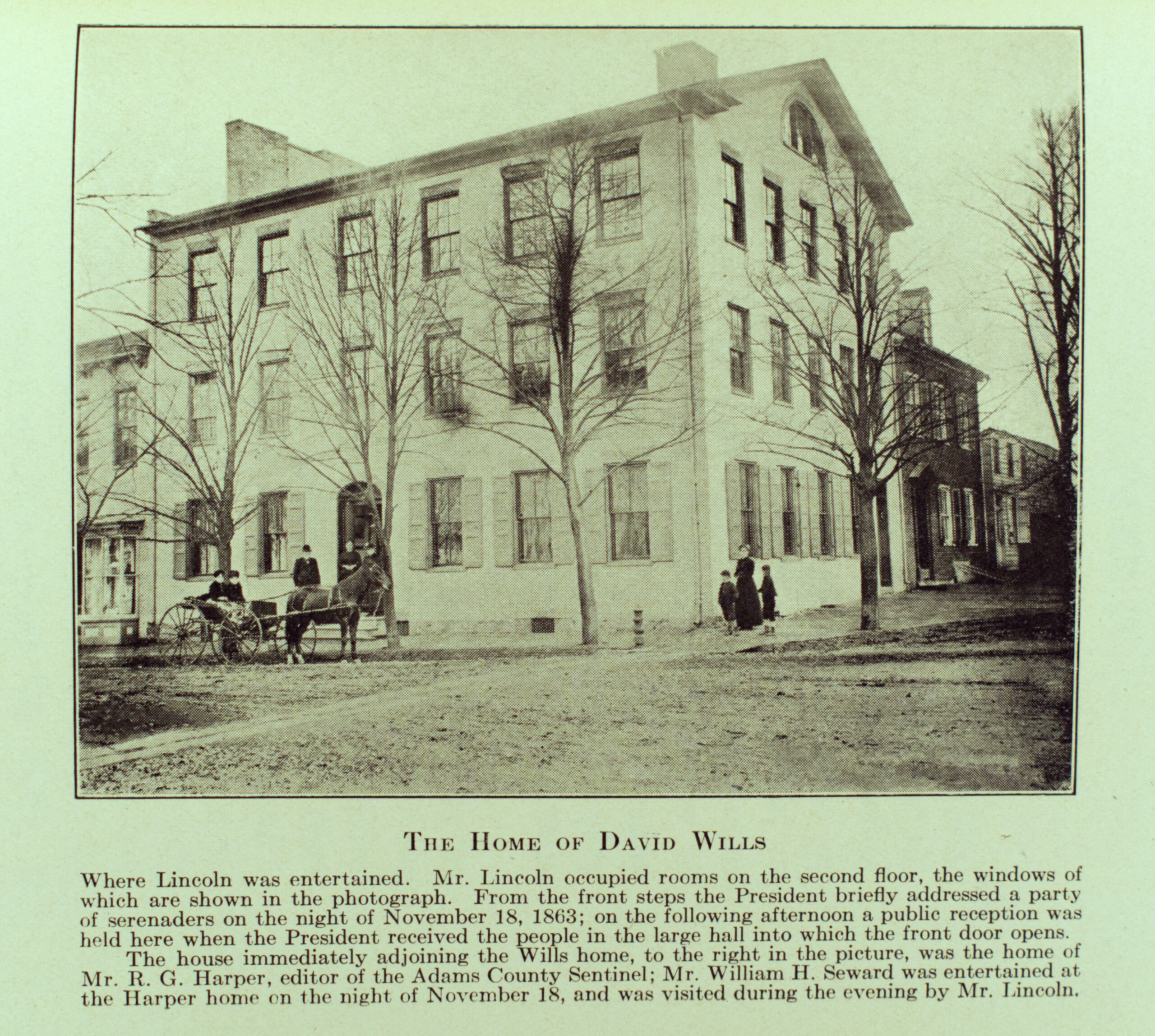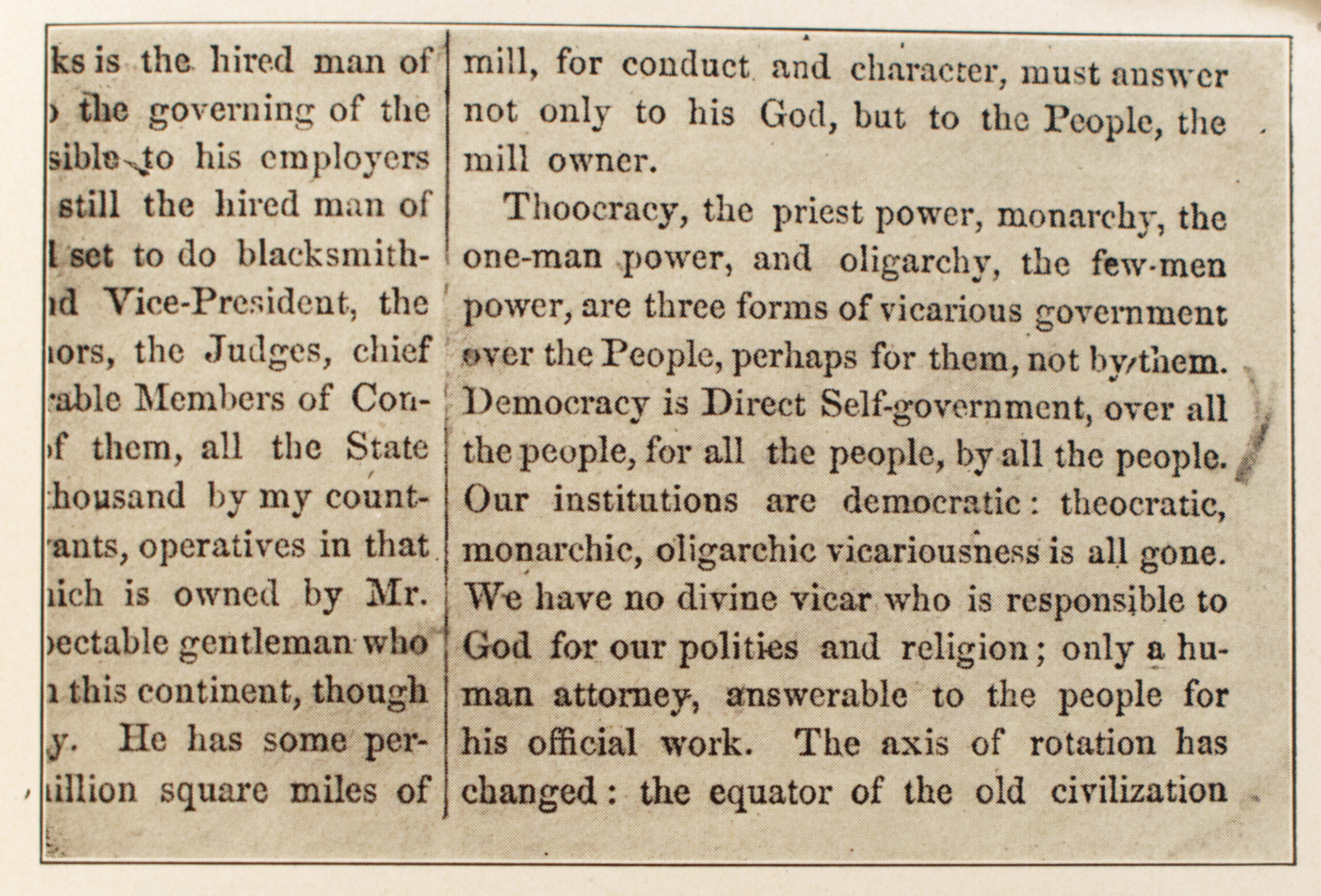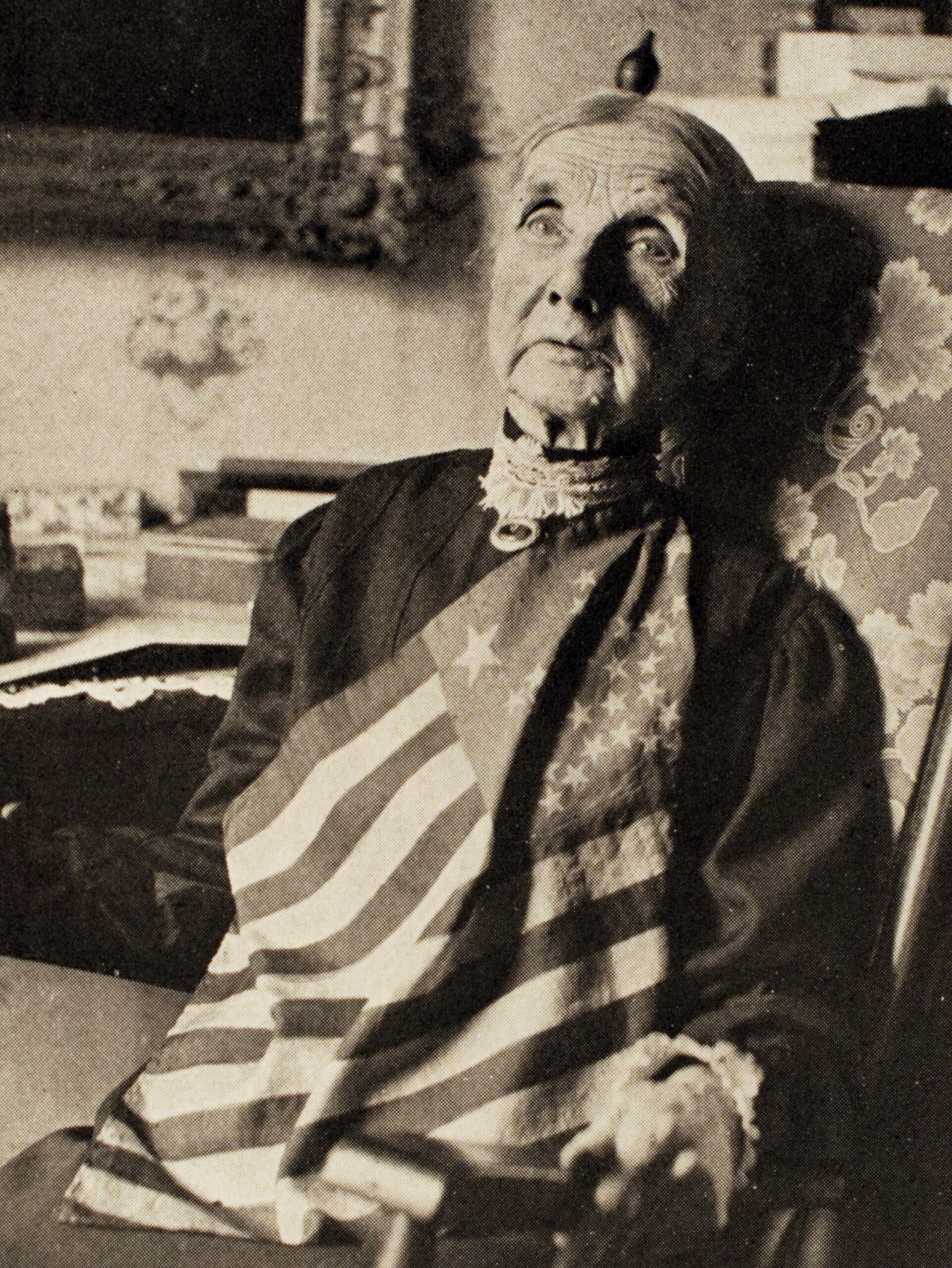Pennsylvania Governor Andrew J. Curtin appointed Gettysburg lawyer David Wills, who first proposed a national cemetery for the Union dead, to supervise the establishment of the National Soldiers’ Cemetery and to coordinate planning with representation of all 18 states whose regiments participated in the three-day battle. Landscape architect William Saunders designed a semi-circular cemetery within the 17 acres of land purchased on the town’s Cemetery Hill. Hastily buried Union soldiers were painstakingly exhumed from the battlefield for reburial over a period of months. Wills took charge of planning the dedication ceremony and, in September, invited Edward Everett—a 70-year-old distinguished Unitarian minister, elected politician, diplomat, classical language professor and former president of Harvard—to deliver the oration for the program. The date of the ceremony, November 19, was chosen to suit Everett’s schedule. As an after-thought, on November 2, Wills wrote to President Lincoln to ask if he might provide “a few appropriate remarks” after Everett’s oration.
[Item 1] Report of the Select Committee Relative to the Soldiers’ National Cemetery, together with the accompanying documents, as reported to the House of Representatives of the Commonwealth of Pennsylvania, March 31, 1864. Harrisburg: Singerly & Myers, state printers, 1864.
[Item 2] Address of Hon. Edward Everett, at the Consecration of the National Cemetery at Gettysburg, 19th November 1863: with the dedicatory speech of President Lincoln, and the other exercises of the occasion, accompanied by an account of the origin of the undertaking and of the arrangement of the cemetery grounds, and by a map of the battle-field and a plan of the cemetery. Boston: Little, Brown, 1864.
Shown is the cemetery map by “landscape gardener” William Saunders of Germantown. The sections of the semi-circular design were proportioned in size to the number of marked graves on the battlefield. One third of the dead were in unmarked graves, located at the end of the semi-circular arrangement. Section 4 on the inner circle is for Delaware, where 15 soldiers are buried.
[Item 3] Carr, Clark E. (Clark Ezra). Lincoln at Gettysburg: an Address. Chicago: A.C. McClurg & Co., 1906. Printed at the Lakeside Press.
President Lincoln appointed Clark Carr, age 24, postmaster of Galesburg, Illinois, in 1861, and the Governor of Illinois appointed Carr as its state commissioner on the Select Committee relative to the Soldiers’ National Cemetery at Gettysburg. In planning the dedication ceremony for the cemetery, Carr is said to have convinced David Wills and the other commissioners to invite Lincoln’s participation with a presidential dedication following Edward Everett’s oration.
Carr wrote, “Short as is Mr. Lincoln’s address, it contains all the elements of an elaborate and finished oration–exordium, argument, climax, and peroration.” Carr also explained that Lincoln’s use of the “of, by, for” expression was “common property” from frequency of use over time. He cited Daniel Webster (1830), abolitionist Theodore Parker (1850), and even anecdotal use by Joel Parker (1853) who mentioned that the Wickliffe Bible (translated before 1384) was “this Bible is for the government of the people, by the people, and for the people.”
[Item 4] Isaac G. Tyson (1833-1913) and Charles J. Tyson (1838-1906). Photograph of crowd and marching troops on the way to the cemetery, Gettysburg, November 19, 1863.
The Tyson brothers of Gettysburg were the only local photographers in residence at the time of the battle. Originally attributed to Matthew Brady, this Tyson photograph captures the crowd of program marshals, military and civilian participants, and four bands preparing to march from the town center, known as the Diamond, to the National Soldiers’ Cemetery. The reproduction shown here is courtesy of the digital prints available from the Library of Congress.
[Item 5] Zeller, Bob, and John J. Richter. Lincoln in 3-D : amazing and rare stereoscopic photographs of his life and times. San Francisco: Chronicle, 2010.
Shown here is Lincoln’s arrival at the speaker’s platform for the dedication of the Soldier’s National Cemetery and how the view would have looked from the crowd, which was said to be between 8,000 and 10,000 in number. Alexander Gardner and other photographers were positioned at quite a distance from the platform. On site visitors in Special Collections are able to use 3-D glasses to enjoy the full experience of viewing this book.
[Item 6] Carmichael, Orton H. Lincoln’s Gettysburg Address. New York: The Abingdon Press, 1917.
As a child in 1863, Agnes MacCreary’s father hosted the 12-member Baltimore singing club that performed the “Consecration Hymn” immediately prior to Lincoln’s Address. The conductor of the group used the flag shown here as a baton and presented it afterward to Agnes, who clearly treasured it all her life.

